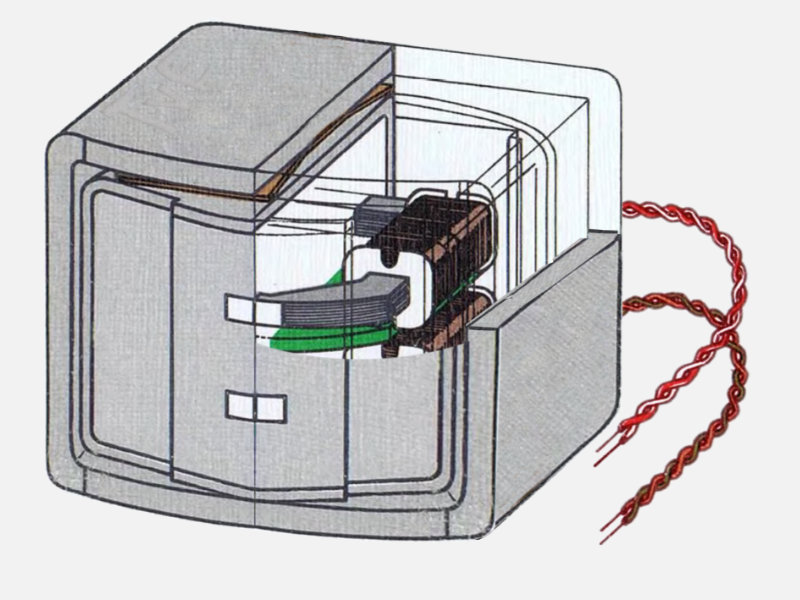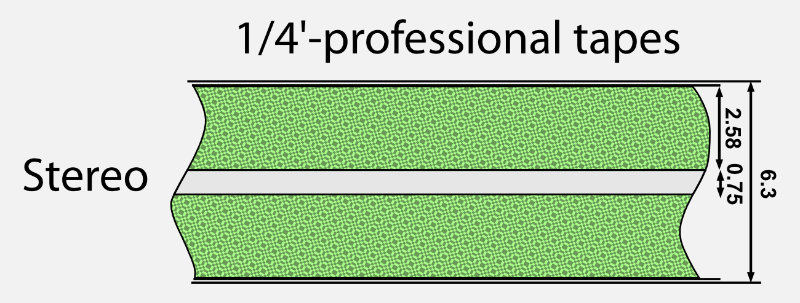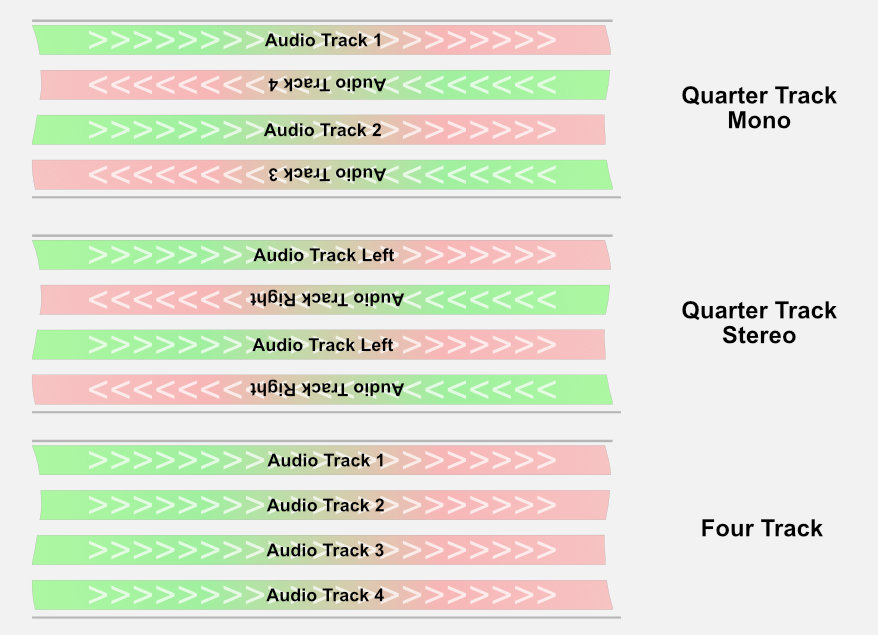Four-Track Audio Digitisation with QUADRIGA at Sound and Vision

Cube-Tec recently published an interview we had with Tonnie van Els and his colleague Margot Knijn about special QUADRIGA•Audio Multi-Channel Modes, which can be read here. Tonnie has additionally published an article on avanet.nl which is strongly related, so we have translated it from Dutch into English to ease access.
A special case: the four-track tape format - MB00058XE
by Tonnie van Els, (Sound Engineer at Sound & Vision)
Normally, digitising a ¼ inch tape is not rocket science, the many tapes we have done come mainly from the angle of music/broadcast. There are so many that we have even set up a semi-automated workflow. The tapes excel in uniformity. Both in terms of specifications, playback speed and track layout. And this has been done to the same standard for decades. I estimate that this started somewhere in the 1950s.

sketch of a 2-channel / 4-track open head
Click to enlarge
For the ¼ inch tapes recorded with 'consumer recorders' this is slightly different. In the 1950s this also came within reach of the hobbyist. The industry was stimulated to put a new system on the market per decade with improvements and new specifications. Over the years, it was the track layout on a tape that had the most impact on interchangeability: full-track mono; double mono; four-track and stereo. And oh yes, quadraphony in the early 70s, the forerunner of surround sound, an audio playback system that did not really break through. Each type of carrier requires different hardware.
In my work, I regularly see them pass by, these tapes recorded with consumer recorders. A while back, I received a tape, the MB00058X, with the request to digitise it with a copy for the client. My estimation was that this had to be a four-track tape. This was correct, until at a certain moment the audio on one track unexpectedly played backwards, then there was a piece with a different speed and more of these kind of anomalies. Usually, this type of carrier is not such an issue, but this particular tape required some 'Human Touch' to make a decent file of it, complete with metadata, so that you later know where what came from the tape.
So what makes this type of tape so much more complicated to process than the other types?

Click to enlarge
Until now, the vast majority of carriers have come from the broadcast world. That is, with the associated standards such as channel layout (see Figure 2), tape speed and only one playback direction. This means that a tape can be digitised in 'one run'.
But the track layout of the four-track tapes has a number of variants (see Figure 3). Normally we digitize such a tape in two steps, namely outward and then return. As a rule, this amounts to four mono or two stereo tracks. The digitisation is usually not such an issue, but sometimes a tape contains a mix of these layouts or even full-track or double mono. The MB00058X is an example of this and digitising this type of tape requires a different approach.
I'll tell you more about that in a moment, because I was also thinking about how we could process many more of these tapes in the future, and that in bulk. Not much later, a project indeed presented itself of which a large part consisted of these four-track tapes. The order was so extensive, with a few other projects in the pipeline, that we adjusted the workflow. By cutting out digitising and post-processing, we can work more efficiently.
How do we digitise the MB00058X?

Click to enlarge
At Sound & Vision we are lucky to have a four-track/four-channel M15 recorder from Telefunken. Because most tapes are fragile, we have adjusted the pull and added an extra playback speed to the recorder. By digitising the four channels simultaneously, you halve the time and the equipment wears less.
We chose the (multitrack) software of Cube-Tec, which offers the possibility to digitise at 192 kHz. It also allows you to reverse the 'backwards' channels. By reversing the order of the samples, they are 'put straight'. So no transcoding, and no loss of quality.
Next, we archive the audio in a four-track interleaved file. All tracks are stored together in a WAV file, where the track layout is also logically related to the original carrier. A multitrack WAV file like this is no problem for archiving; we have been doing it for more than ten years. The file can be opened and edited in various (freeware) software packages.
For instance, tape MB00058X is now digital and has entered our collection management system DAAN, as well as a few hundred other four-track tapes...
Related Links
- Original article from Sound & Vision (only available in Dutch)
- QUADRIGA•Audio Multi-Channel

